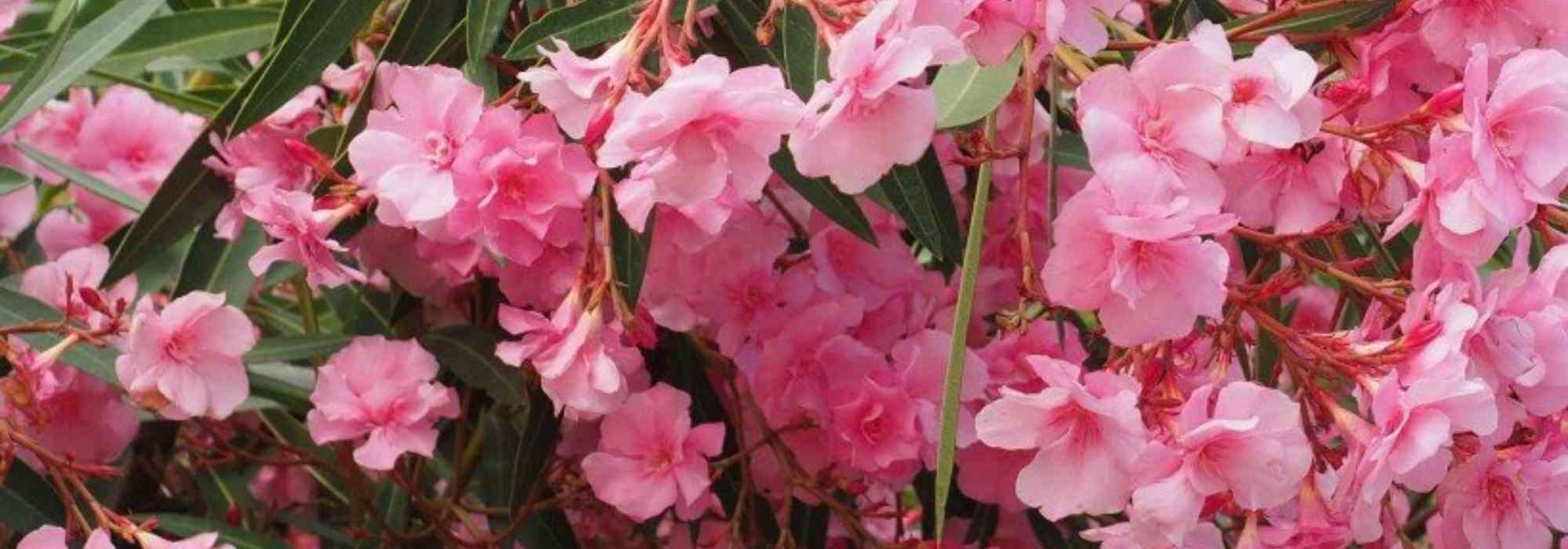
9 shrubs with pink flowers you should have in your garden
Our selection
Contents
Pink-flowering bushes bring great charm and romance to a garden: Blending beautifully with white and blue tones, they bring softness and freshness when paired with greyed or glaucous foliage. In bolder tones, they also lend energy and dynamism to spaces.
However, as pink is the most widespread flower colour, choosing can be difficult when you want to expand an existing range of bushes or create new borders. Bright-pink, pastel-pink, candy-pink, salmon-pink, crimson-pink bushes… deciduous, evergreen, groundcover, climbers, winter-, spring- or summer-flowering… there is a myriad of enticing varieties, best used sparingly to avoid pink becoming a little cloying. Here we offer a selection combining classic, hardy bushes with less common cultivars that will bring unique grace to your garden!
Kolkwitzia amabilis: an English-style charm
A rather unpronounceable name, but serious assets that earn it a place in this selection: here is Kolkwitiza amabilis, sure to enchant your garden when fine weather returns! This deciduous bush flowers between May and June, literally covering itself with a multitude of very pale pink little flowers, lightly scented, for three weeks. Its flowering is genuinely enchanting, as the delicate pearly pink flowers with orange centres form a spectacular pink cloud. Its arching habit is magnificent and very graceful in a naturalistic or country garden setting. Be patient in early years; it takes on this supple silhouette as it matures. Its foliage even becomes interesting in autumn, colouring shades of purple or mahogany. When mature, its bark is superb, peeling in fine strips.
This “beauty bush”, true to its name, can be planted in many gardens, withstanding temperatures down to -20°C. It also grows in any type of soil, in full sun or partial shade, the latter enhancing its inflorescences. Plant it in an informal hedge where it performs wonderfully, plant singly on a short grass meadow to enjoy that incredible silhouette, or in a mixed border where it will keep company with Nepetas, Delphiniums and other ornamental alliums.
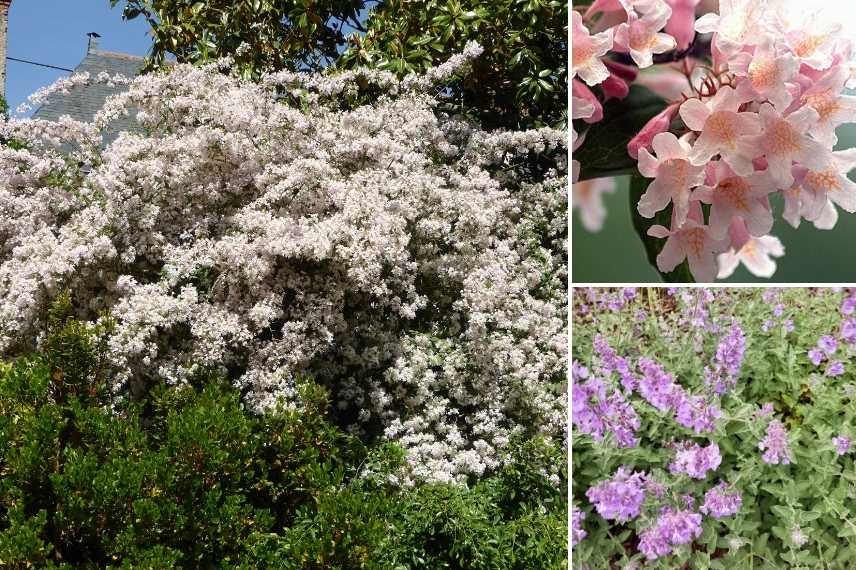
Kolkwitiza amabilis, habit and flower (top right), pairs well with Nepetas
Podranea: an exceptional liana
Podranea ricasoliana, also called pink trumpet vine, is a climbing bush of the Bignoniaceae family, whose flowers closely resemble those of the true trumpet vine (Campsis). This pink bush is absolutely magical when trained against a wall or over an arch in full sun, the cascade of pink trumpet flowers striated with red drawing every eye. As with its cousin the trumpet vine, it will produce after flowering pod-shaped fruits that are rather decorative.
Deciduous or semi-evergreen bush for mild climates (hardy to around -5°C), Podranea ricasoliana flowers at a time when the garden is beginning to flag, from September to November, which is by no means its least asset. Its flowers are extremely melliferous, and its compound foliage, a fairly bright glossy green, is also very elegant.
It can also be grown in a pot, to be stored in winter or kept in a conservatory if you live in a less favourable area, but you will lose the scale it can reach (up to 5 m) when allowed to grow freely on a suitable support.
This pink-flowering bush will remain in place for years provided a south-facing position gives it the warmth needed for vigorous growth. Do not hesitate to mulch well around the base in the first years while it establishes. It will only need fertile, well-drained soil.
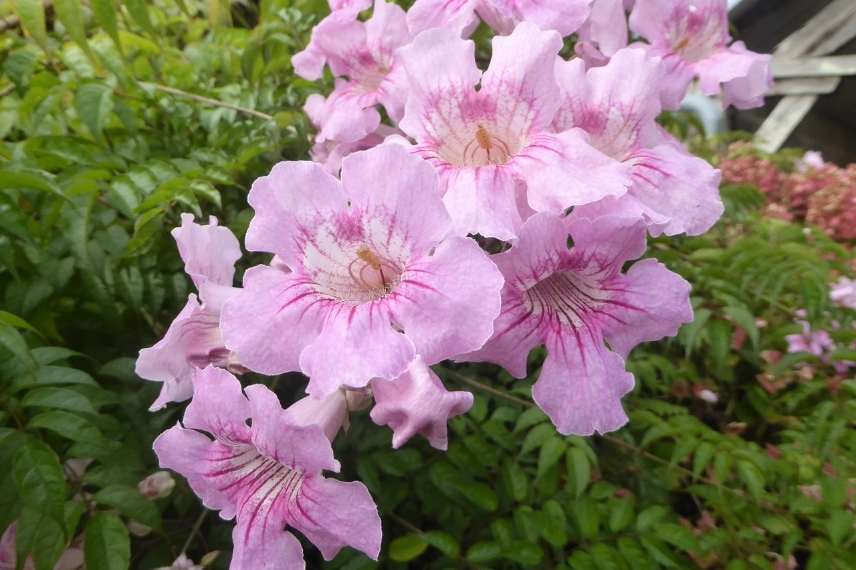
Inflorescences of Podranea ricasoliana (Photo Gwenaëlle David)
Discover other Pink flowering shrubs
View all →Available in 0 sizes
Available in 1 sizes
Available in 1 sizes
Available in 1 sizes
Available in 1 sizes
Available in 1 sizes
Available in 2 sizes
Available in 1 sizes
Available in 1 sizes
Available in 1 sizes
Sambucus nigra 'Black Beauty': delicacy on purple foliage
Among black elders, the cultivar ‘Black Beauty’ is an elegant deciduous bush with purple foliage and airy pink flowers. Flowering occurs in May or June depending on region. It then becomes covered with small flowers grouped in panicles 10 to 15 cm long. They turn white as they open, and are particularly attractive, standing out against the very deeply divided purple foliage. Flowers give off a slightly lemony scent and are melliferous. They become dark red berries then black at ripeness.
Fast-growing and particularly hardy (to at least -15 °C), this very handsome bush with a loose, spreading habit is especially suitable for natural hedging or mixed borders, where its very deeply divided, colourful purple foliage remains attractive long after flowering. It brings a very natural charm to a garden and can fit into small spaces, its dimensions remaining modest (2.5 x 2 m). Plant in a sunny position where its foliage will be best shown off, or in partial shade. It tolerates all soil types and copes well with drought and urban conditions.
Pair with evergreen bushes or perennials in pastel tones to enhance its romantic air, and with bluish, purple or chartreuse foliage to add contrast, such as Stachys byzantina, Salvia nemorosa, Papaver orientale ‘Perry’s White’, Cotinus, Euonymus ‘Harlequin’, Physocarpus, etc…
Viburnum bodnantense 'Dawn': brightens winter
Here is an unassuming viburnum, nonetheless very interesting, which enlivens the garden in mid-winter with its magnificent pink flowering. The Viburnum bodnantense ‘Dawn’ is a medium-sized bush (about 2.5 m high), with deciduous foliage, whose upright and dense habit is very picturesque. Its very early terminal pink flowering is truly delightful: its flowers often appear from December on the bare wood and remain on the bush until February. It thus provides a very delicate pink note in the garden, much appreciated during winter. The inflorescences, which resist frost well, are a deep pink at bud burst period and a pinkish white once open. They literally perfume the garden with an intense fragrance for many months. You can even make superb winter bouquets from these handsome stems!
Young bronze foliage develops a beautiful autumnal colouring from red to deep purple. Plant it in sun or partial shade, close to a path to fully enjoy its delightful fragrance. Hardy and easy, of medium growth, it is perfect in a shrub border, informal hedge or even as a specimen, accompanied by simultaneous flowering or by plants that will take over: Erica carnea, Chaenomeles (Japanese quince), Forsythia, Cornus ‘Flaviramea’, Euonymus japonicus, rosemary…
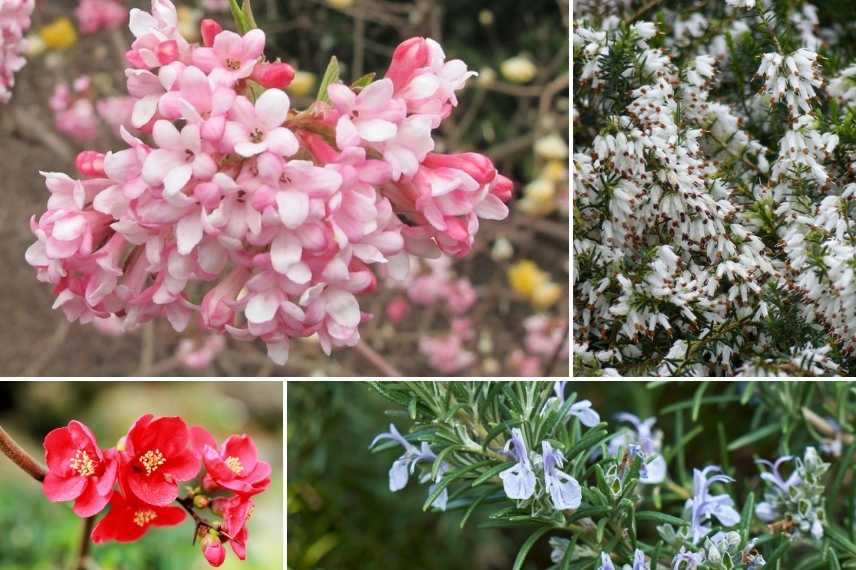
Viburnum bodnantense ‘Dawn’, Erica carnea ‘Springwood White’, Chaenomeles, Rosmarinus
Cornus kousa 'Satomi': devilishly Japanese
What about adding a Japanese-inspired pink touch to your garden? The Cornus kousa ‘Satomi’ is covered in a spectacular rose flowering in June: the superb flowers are actually four large vivid pink bracts, paler towards the centre, each about 10 cm in diameter. The ‘Satomi’ variety has the typical tabular habit (with tiered branches) of Japanese dogwoods. This dogwood will reach about 3.50 m in height at ripeness with a 2.50 m spread. It thrives best in partial shade, without particular soil requirements unlike other Cornus kousa (which obligatorily require an acid soil). Its foliage adds to its appeal, colouring in very beautiful orangey and reddish shades in autumn. Finally, the small fruits that form in late summer, resembling little red strawberries, persist on the tree for a long time, giving it a distinctive character.
It is truly majestic when planted as a specimen, attracting all eyes in spring. It can also be used in a Japanese-inspired border, alongside other cornus with white flowering (Cornus kousa ‘China Girl’), some azaleas in deeper pinks, the whiteness of some irises and Lysimachia…
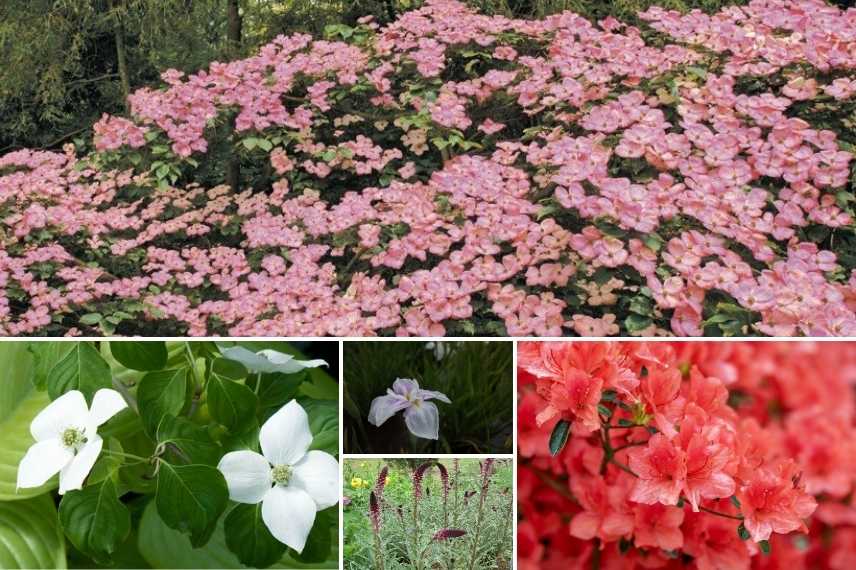
Cornus kousa ‘Satomi’, Cornus ‘China Girl’, Iris, Lysimachia atropurpurea, Azalea
Leptospermum ‘Martini’ : long-lasting exotic flowering
Leptospermums, also called tea trees or southern sea myrtles, already evoke distant lands by name! These small evergreen bushes native to New Zealand are particularly floriferous, and very appealing for the elegance and length of their flowering.
Le Leptospermum scoparium ‘Martini’ is one of the most remarkable for its colours: a vivid pink highlighted by a crown of dark pink stamens with a black centre — striking! It flowers profusely with numerous small flowers all along the stems, from April, mainly in May and June, for about six weeks. Bush with upright, bushy habit, it reaches about 1.5 m in every direction in our latitudes. With age it becomes more rounded, bowing under the abundant flowering. Its grey‑green and bluish foliage is superb, and its very fine pointed leaves are also part of this bush’s appeal.
Charming when trained as a standard and grown in a container when climatic conditions require it (tender to -8°C), it can in mild climates be planted in well‑drained, light but fertile and fresh soil, in bright partial shade, or in sun which induces abundant flowering. It also tolerates heat well. Resistant to sea spray, it appreciates the coast and cool oceanic conditions. In this setting, pair it with Cistus, Olearia and other glaucous foliage such as blue fescues.
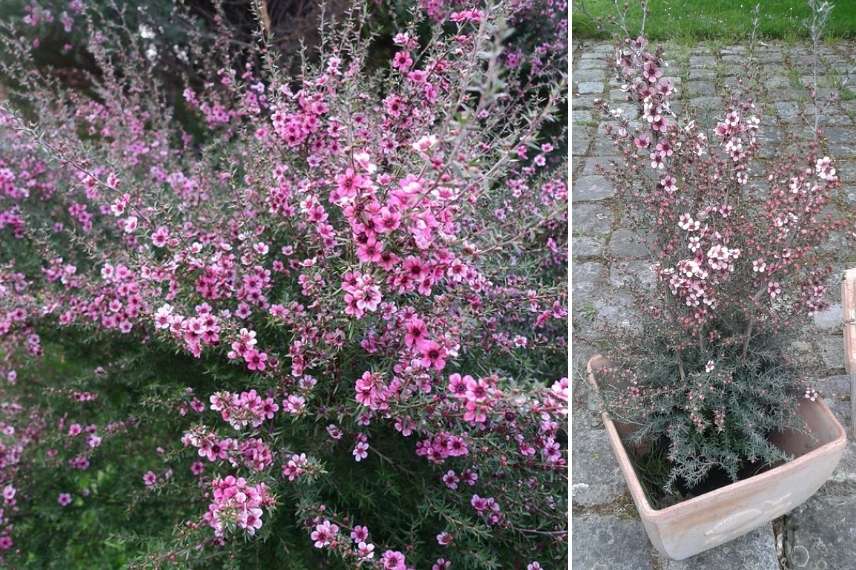
Leptospermum ‘Martini’ in a border (Photo: J. McCombs), and in a container
Escallonia 'Red Carpet': a vigorous groundcover
Originating from South America, Escallonias are very ornamental evergreen bushes offering one of the widest ranges of pinks, and sometimes whites. Regarded as frost-sensitive, their horticultural varieties nevertheless show interesting hardiness down to -10 to -15°C. Vigorous, dense and very floriferous, their flowering is long, occurring from early June through July–August.
Among some sixty cultivars, we offer in this selection Escallonia ‘Red Carpet’ which is characterised by its compact size (80 cm high). Its tubular, trumpet-shaped flowers are a deep pink, almost red. Its small foliage is glossy, a lovely dark green. It forms a perfect groundcover, with a spread of about 1.5 m, which can fill a border, but also a rockery, or a container on a balcony or terrace. Plant in sun, in any well-drained soil, it is actually very easy to grow, and ideal by the seaside where it tolerates sea spray well.
Pair it in a border with Gaura, and other creeping bushes with staggered flowering, white or blue: Deutzia ‘Yuki Cherry Blossom‘, Iberis sempervirens, Achillea umbelatta.
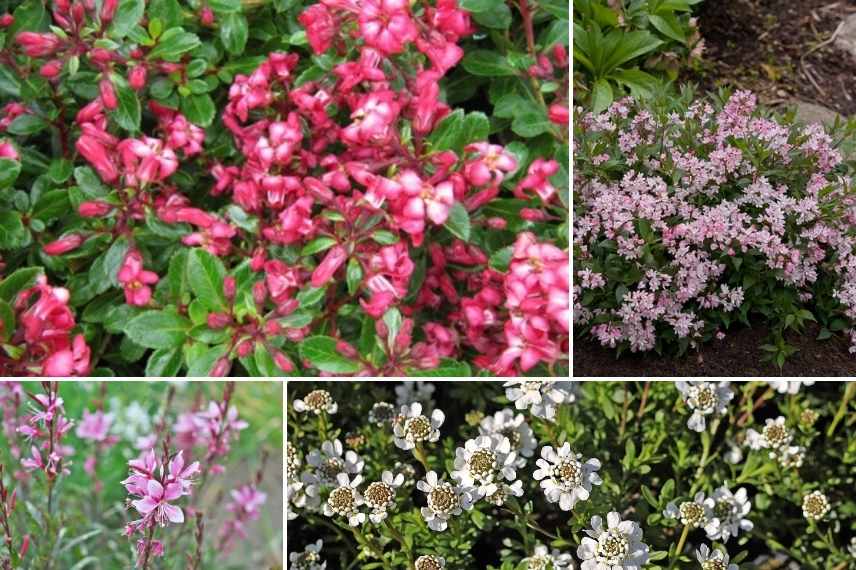
Escallonia ‘Red Carpet‘, Deutzia ‘Yuki Cherry Blossom’, Gaura, Iberis sempervirens
Nerium oleander: a garden classic
Let’s not forget in this selection of pink-flowering bushes a classic of the genus, Oleander, an emblematic bush of southern France that immediately evokes the Mediterranean coast.
Fast-growing, evergreen, abundantly flowering from June to September (and from May to October depending on climate), Nerium oleander has enormous qualities. It does well in large tubs in regions with harsher winters, and is now available in varieties more resistant to cold.
Oleander ‘Rose Double’ is a little marvel with its double, bright-pink flowers, particularly floriferous. The flowers, tubular in shape with a corolla of 5 undulate petals, are grouped at terminal parts of the flexible shoots.
Reaching 2.5 to 3 m at ripeness, with a bushy, upright and dense habit, it has beautiful ash-green foliage, narrow, evergreen, which makes it a very ornamental bush along a well-sheltered wall. It is hardy down to -10°C once well established, and should be protected during first years. Undemanding about nature of soil, it only needs sun! Like many oleanders, this cultivar can also be planted in a tub which should be overwintered in a conservatory or greenhouse during winter in cold regions. This variety requires regular watering during summer.
Oleander ‘Rose Double’ is sublime in isolation, but is also magnificent in a hedge, in groups of oleanders of similar colours associated with other evergreen bushes such as grevilleas, Choisyas, Pittosporum for a mass effect in mild climates. It can also be used in borders or in tubs.

Nerium oleander ‘Rose Double’, Mexican orange, Pittosporum tenuifolium ‘Variegatum’, Pittosporum tobira, Grevillea juniperina
Hydrangea macrophylla 'So Long Sunny': original and bicolour
Bored of classic pink hydrangeas? Like them on a Breton postcard, but find their large monotone heads dull? You might be surprised by how many new cultivars can astonish with ever more original forms.
Hydrangea macrophylla ‘So Long Sunny’ is one of those little gems for collectors, for lovers of bushes that brighten shady parts of garden, or for beginning a great love affair with this large family of bushes!
Its curious frilly, bicoloured flowers are what make it so original. As with all Hydrangea macrophylla with rounded heads, it bears inflorescences formed on compact spherical heads of about 12 cm. But these evolve throughout flowering, changing from red to white, then pinkish-white mixed with green before ending brick-red as they fade! Its long flowering renews from late June to October, with a peak in July and August, and perpetual in September and October.
It also has another major asset: this hydrangea flowers on wood of the year, so it is not afraid of late frosts. Its large foliage turns yellow in autumn before falling. Of great hardiness, it can be planted in any region, in shade or semi-shade, as a specimen, in hydrangea groupings, or accompanied by elegant Thalictrums and Hostas, but also in a pot or low hedge, as it is modest in size (1 m tall).
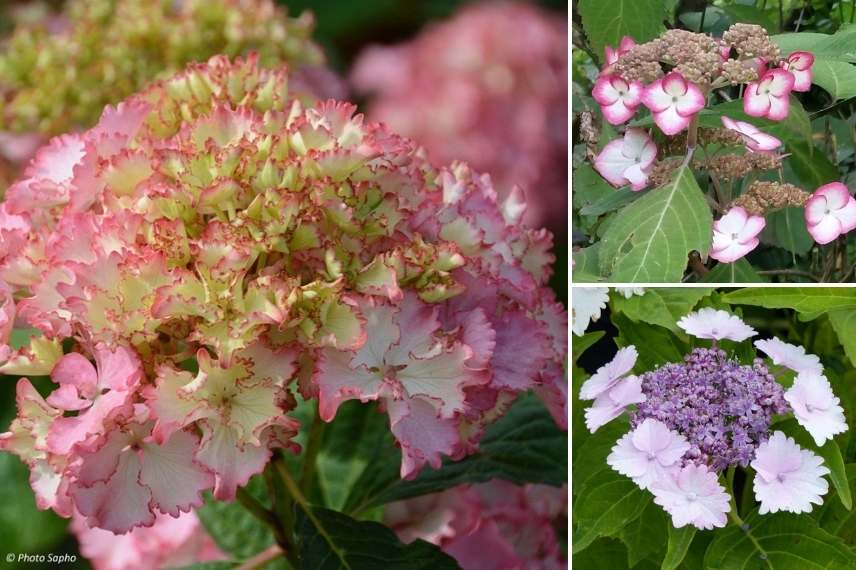
Hydrangea macrophylla ‘So Long Sunny’, Hydrangea serrata kyosumi, and Hydrangea macrophylla ‘Koria’
- Subscribe!
- Contents


































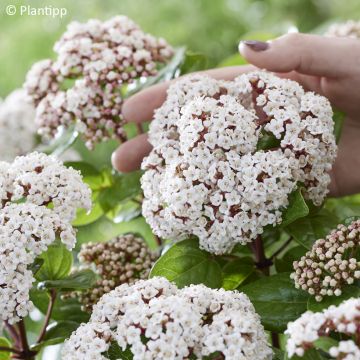
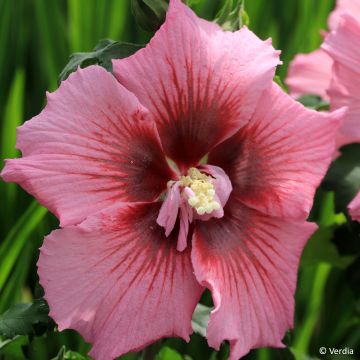
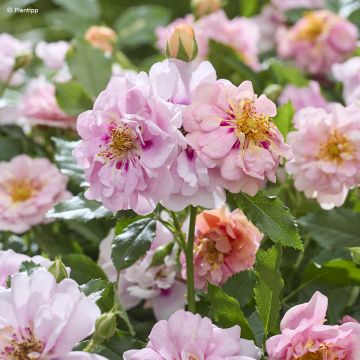
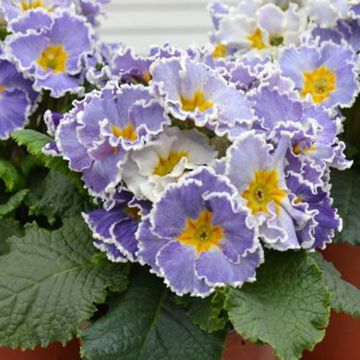


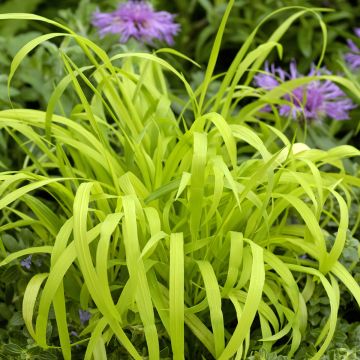
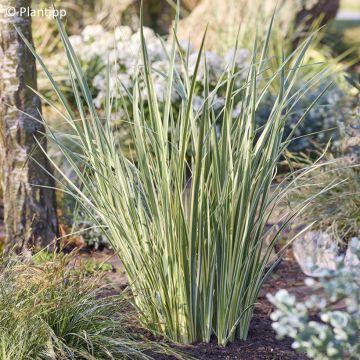
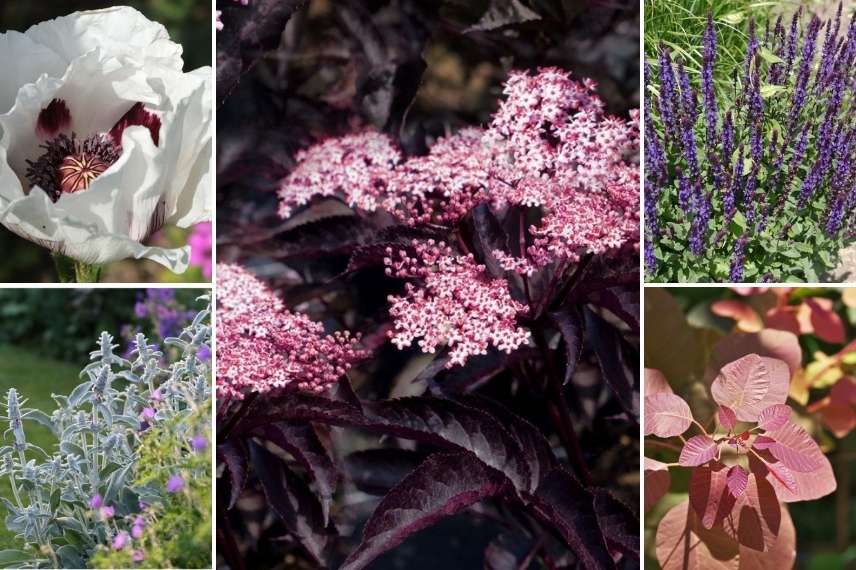
Comments